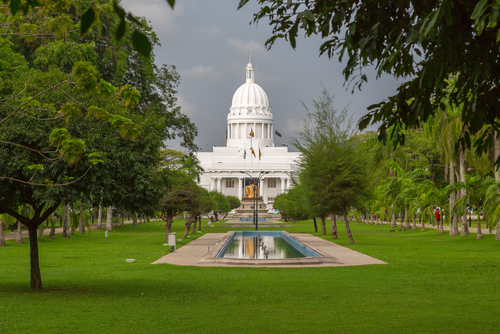Sri Lanka’s Snap Election and Economic Reform

Please note that we are not authorised to provide any investment advice. The content on this page is for information purposes only.
Sri Lanka’s president, Mahinda Rajapaksa, has called a snap mid-term election on 8 January 2015, two years ahead of schedule, in a bid to win a third term in office. What was largely expected to be a one-horse race has quickly become a close run proposition, with the surprise entry of Maithripala Sirisena —the General Secretary of the president’s own Sri Lanka Freedom Party (SLFP), no less — as the common opposition candidate.
Sri Lanka’s president, Mahinda Rajapaksa, has called a snap mid-term election on 8 January 2015, two years ahead of schedule, in a bid to win a third term in office. What was largely expected to be a one-horse race has quickly become a close run proposition, with the surprise entry of Maithripala Sirisena —the General Secretary of the president’s own Sri Lanka Freedom Party (SLFP), no less — as the common opposition candidate.
The entry of a ‘common candidate’ representing all opposition parties is not new. In 2010, too, the opposition put up a common candidate, but this failed to prevent the decisive victory of the incumbent, who carried 58 per cent of the popular vote. It marked the peak of popularity for the president, whose main asset then was popular gratitude for ending three decades of armed separatist violence across the country.
For governments continuously to increase their support base while in power is very rare. Clearly, the president is a more contested leader this time around. That the share of the popular vote of the ruling coalition has been dropping since its heyday is evident from recent provincial level elections. The call for early elections was thus an astute recognition that a third term re-election bid stands a better chance if it happens sooner rather than later.
The opposition’s rallying cry for change is ‘governance’. Charges are that institutions are weaker and that the government is adopting an increasingly authoritarian style, characterised by decision-making powers wielded by a handful of trusted insiders. It is not surprising then that the theme of the opposition’s campaign is all about pruning the powers of Sri Lanka’s executive presidential system.
The opposition has not mentioned the economy much. This is because the numbers are favourable to the government for now. Economic growth in post-war Sri Lanka has averaged 7.5 per cent, with 7.7 per cent growth in the first nine months of 2014. Unemployment is at an estimated low of 4 per cent while inflation is hovering at a modest 3.5 per cent. With a steady improvement in the fiscal deficit, estimated at 5 per cent of GDP in 2014, the government can introduce a populist, big-spending budget for 2015.
But while things are going well at the moment, the president might well have been wise to go to the polls sooner rather than later. While the near-to-medium term outlook for the economy appears healthy, the long-term prognosis for sustained high growth is not as good. Sri Lanka’s economic growth so far has relied heavily on infrastructure development financed by overseas borrowing. With high levels of external indebtedness, modest export earnings growth and limited private investor appetite to expand production capacity, it is clear that what the economy needs most are productivity-enhancing reforms.
In the run up to elections, neither the government nor the opposition appear to be paying much attention to the kind of economic reforms that would help Sri Lanka reallocate factors of production to more productive areas of the economy. The government is promising to push ahead with its ambitious infrastructure development, while the opposition is pledging to reduce the cost of living and promising sizeable handouts, including public sector wage increases.
It is perhaps not surprising that neither candidate appears to have the appetite for economic reform. These can be politically controversial and often unpopular. For the government, its infrastructure drive is at least delivering growth. For the opposition, though, ideological differences need ironing out before agreeing on economic policy details. They are less concerned about policy at the moment, and more about winning the election.
Whomever Sri Lankans pick as their president on 8 January 2015, the economic fallout will hinge on perceptions of political stability in the country. The latter has been the bedrock of post-war economic recovery. Even the best economic reform package will fail to deliver on long-term prosperity if the country loses this most significant post-war asset.
The economics of Sri Lanka’s mid-term elections is republished with permission from East Asia Forum




